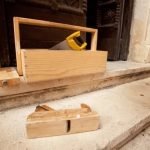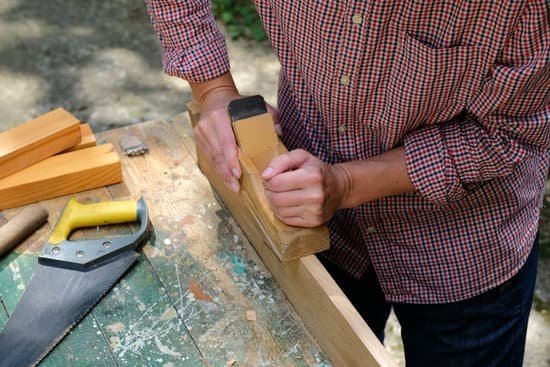Woodworking, a timeless craft and hobby, can be an immensely rewarding activity. Whether you are a seasoned woodworker or just starting out, it is crucial to prioritize safety. In this article, we will explore the key aspects of woodwork safety and how to ensure a secure work environment. From understanding the tools and equipment to creating a safe workspace, we will cover everything you need to know about staying safe in woodwork.
Woodwork safety is essential for every individual who works with wood, from DIY enthusiasts to professional craftsmen. Understanding the potential hazards and knowing how to mitigate them is crucial in preventing accidents and injuries. This article will provide comprehensive guidance on personal protective equipment (PPE), safe practices, handling hazardous materials, emergency preparedness, and more.
Whether you are using power tools or hand tools, each piece of equipment comes with its own set of safety guidelines. We will delve into the importance of knowing your tools inside out and understanding their proper usage.
By mastering basic techniques and best practices for safe woodworking, you can minimize the risks associated with this hands-on craft. So let’s dive into the world of woodwork safety and learn how to create a secure environment for your woodworking projects.
Understanding Woodwork Tools and Equipment
When it comes to woodwork, having a good understanding of the tools and equipment you will be using is crucial for ensuring your safety. The first step in learning how to be safe in woodwork is familiarizing yourself with the different types of tools and their specific uses. From hand tools like chisels and saws to power tools such as drills and sanders, each piece of equipment plays a unique role in woodworking projects.
It’s important to not only know how to properly use these tools, but also how to maintain them for optimal performance and safety. Regular maintenance, including keeping blades sharp and ensuring all safety guards are in place, can help prevent accidents and injuries in the workshop. Additionally, understanding how each tool functions can help woodworkers make informed decisions about which tool is best suited for a specific task.
Proper training on the correct usage of woodworking tools is also essential for preventing accidents. Whether through formal education or hands-on experience under the guidance of an experienced woodworker, knowing how to safely operate and maintain woodworking tools is vital. This knowledge can provide woodworkers with the confidence they need to work efficiently while prioritizing safety.
| Woodworking Tool | Safety Tip |
|---|---|
| Saw | Keep fingers away from the blade and use push sticks for narrow cuts. |
| Drill | Always wear eye protection when drilling to prevent flying debris. |
Remember that no matter your level of experience, ongoing vigilance and attentiveness are key components of staying safe in woodwork, especially when working with various types of woodworking tools. By maintaining a thorough understanding of these tools and their proper usage, you can decrease the risk of accidents while practicing this craft.
Importance of Personal Protective Equipment (PPE)
Personal Protective Equipment (PPE) is a crucial aspect of ensuring safety in woodwork. PPE includes items such as safety goggles, hearing protection, gloves, and respiratory protection. When working with woodwork tools and equipment, it’s important to understand the purpose of each type of PPE and how to use them effectively to minimize the risk of accidents and injuries.
Safety goggles are essential for protecting your eyes from wood chips, sawdust, and other debris that can be produced while using power tools or hand tools. It’s important to ensure that the safety goggles fit properly and have no cracks or damage that could compromise their effectiveness.
In addition to wearing safety goggles, ear protection is also necessary when using loud machinery such as saws or drills. Prolonged exposure to loud noise can cause hearing damage, so it’s important to wear ear protection at all times when operating such equipment.
Gloves are another essential piece of PPE when working with woodwork tools. They protect your hands from splinters, cuts, and punctures that can occur while handling rough materials or sharp objects. Proper respiratory protection is also vital when working with wood dust or other airborne particles that could be inhaled. Dust masks or respirators should be worn to prevent inhaling harmful particles that could lead to respiratory issues in the long run.
| Personal Protective Equipment (PPE) | Importance |
|---|---|
| Safety Goggles | Protect eyes from wood chips and sawdust |
| Ear Protection | Prevent hearing damage from loud machinery |
| Gloves | Protect hands from splinters, cuts, and punctures |
| Respiratory Protection | Prevent inhaling harmful particles from wood dust |
Safe Woodwork Practices and Techniques
When working with wood, it is important to always prioritize safety to prevent accidents and injuries. Here are some essential safe woodwork practices and techniques to keep in mind:
- Always Read and Understand Instructions: Before using any woodworking tool or equipment, it is crucial to read the user manual and understand the proper way of using it. This will help you avoid potential hazards and use the tools effectively.
- Use Proper Technique: Using the correct technique when handling woodworking tools can significantly reduce the risk of accidents. For example, when using a saw, ensure that you have a stable grip on the handle and maintain proper posture throughout the cutting process.
- Keep Work Area Clean and Organized: Clutter in the workspace can increase the risk of accidents. Make sure to keep your work area clean and organized at all times. This includes safely storing tools when they are not in use and keeping your workspace free from tripping hazards.
By following these safe woodwork practices and techniques, you can minimize the risk of accidents while working with wood. It is crucial to always prioritize safety by being mindful of how you use woodworking tools, maintaining a clean workspace, and following proper techniques for handling materials. Remember, safety should always be the top priority in any woodwork project.
Identifying and Handling Hazardous Materials
Woodwork often involves the use and handling of various hazardous materials that can pose risks to the health and safety of woodworkers. It is crucial to be knowledgeable about these materials and understand how to handle them properly to avoid accidents or injuries. Here are some common hazardous materials used in woodwork, along with tips on how to handle them safely:
- Chemical Wood Preservatives: Many woodworking projects involve treating wood with preservatives to protect it from decay and insect damage. However, certain wood preservatives contain toxic chemicals such as arsenic, creosote, or copper compounds. Woodworkers should always read and follow the manufacturer’s instructions when using these products, wear appropriate PPE such as gloves and respiratory protection, and work in a well-ventilated area.
- Paints and Solvents: Woodworking often requires the use of paints, varnishes, stains, and solvents. Many of these products contain volatile organic compounds (VOCs) that can be harmful if inhaled or absorbed through the skin. When working with these materials, it is important to wear respiratory protection, gloves, and protective clothing, as well as work in a properly ventilated space or use a respirator if necessary.
- Dust and Sawdust: Sanding or cutting wood produces fine dust particles that can be hazardous if inhaled. Wood dust has been known to cause respiratory issues such as asthma or even cancer after prolonged exposure. To minimize the risk of exposure to wood dust, woodworkers should wear dust masks or respirators while sanding or sawing wood, and ensure that their workspace is equipped with proper dust collection systems.
In addition to understanding how to handle hazardous materials safely in woodwork, it is also important for woodworkers to know how to properly dispose of these materials once they are no longer needed. Many hazardous substances cannot simply be thrown away in regular trash bins and require special disposal methods to prevent environmental contamination.
Overall, by being aware of the potential hazards posed by certain woodworking materials and following appropriate safety measures when handling them, woodworkers can significantly reduce the risk of accidents or health issues related to exposure to hazardous substances.
Creating a Safe and Organized Workspace
Proper Tool Storage
One of the key components of maintaining a safe woodwork environment is ensuring that all tools and equipment are stored properly. When not in use, tools should be stored in designated places, such as toolboxes or wall-mounted racks, to prevent them from becoming trip hazards or causing injuries. It is also essential to keep workspaces clear of clutter and debris to minimize the risk of accidents.
Good Ventilation
Woodworking often involves the use of various chemicals and materials that can produce harmful fumes. To create a safe workspace, it is crucial to ensure good ventilation. This can involve installing proper exhaust systems or working in areas with adequate airflow. Additionally, wearing masks while working with hazardous materials can help protect against inhaling potentially harmful particles.
Fire Safety Measures
In woodworking, there is always a potential risk for fire due to the presence of flammable materials and equipment such as sawdust, wood shavings, and power tools. It is imperative to have fire safety measures in place, such as having fire extinguishers readily available and knowing how to operate them effectively.
In addition, having an emergency evacuation plan and understanding how to prevent fires through proper maintenance of tools and equipment are crucial aspects of creating a safe and organized workspace.
By implementing these strategies for creating a safe and organized workspace, individuals can significantly reduce the risk of accidents while working on woodworking projects. Paying close attention to tool storage, ventilation, and fire safety measures can help ensure a secure environment for both amateur enthusiasts and professional woodworkers alike.
First Aid and Emergency Preparedness in Woodwork
Woodwork can be a fulfilling and enjoyable hobby or profession, but it also comes with its own set of risks and potential hazards. Accidents can happen in the workshop, and it is important to be prepared for any emergencies that may arise. This section will cover the importance of first aid and emergency preparedness in woodwork, providing essential knowledge on how to handle injuries and ensure a safe working environment.
Importance of First Aid Training
One of the most crucial aspects of being safe in woodwork is knowing how to administer first aid in case of an accident. Whether it’s a minor cut or a more serious injury, having the knowledge and skills to provide immediate medical assistance can make a significant difference in the outcome. It is highly recommended for all woodworkers to undergo basic first aid training, which includes CPR, wound care, and recognizing the signs of more severe injuries.
Emergency Response Plan
In addition to having first aid knowledge, it is essential to have an emergency response plan in place in the workshop. This plan should outline what steps to take in case of an accident or injury, including who to contact for help, where emergency supplies are located, and the procedure for evacuating the workspace if necessary. By having a clear plan in place, woodworkers can effectively respond to emergencies and minimize potential harm.
Emergency Equipment and Supplies
Lastly, maintaining adequate emergency equipment and supplies in the workshop is vital for ensuring quick and effective response to any incidents. This includes having a well-stocked first aid kit readily available, as well as fire extinguishers, eye wash stations, and other safety devices as needed. Regularly inspecting these supplies and ensuring they are easily accessible can help prevent further harm if an emergency occurs during woodwork activities.
Resources for Further Education and Training on Woodwork Safety
Woodwork safety is a crucial aspect of woodworking, and it is important to continuously educate oneself on the best practices to ensure a safe work environment. Fortunately, there are numerous resources available for further education and training on woodwork safety that can help woodworkers stay updated on the latest safety guidelines and techniques.
One valuable resource for further education and training on woodwork safety is industry-specific workshops and seminars. These events often feature experts in the field who provide insightful knowledge and practical demonstrations on safe woodwork practices. Attending these workshops can provide woodworkers with hands-on learning experiences, allowing them to see first-hand how to safely use tools and equipment.
Another useful resource for continued education on woodwork safety is online courses and tutorials. Many organizations and institutions offer online courses that cover various aspects of woodwork safety, including tool usage, hazard identification, emergency preparedness, and more. These courses often allow participants to learn at their own pace and can be a convenient option for those with busy schedules.
Additionally, publications such as books, manuals, and industry magazines offer valuable information on woodwork safety. These resources cover a wide range of topics related to woodworking, including safety guidelines, best practices, personal protective equipment recommendations, and more. Keeping up with the latest publications in the field can provide woodworkers with new insights into how to be safe in woodwork.
Conclusion
In conclusion, the key to being safe in woodwork lies in a combination of knowledge, caution, and preparedness. Understanding the tools and equipment used in woodworking, as well as the importance of personal protective equipment (PPE), is crucial for preventing accidents and injuries. Employing safe practices and techniques when working with wood, along with proper handling of hazardous materials, further contributes to creating a secure environment.
In addition to these measures, maintaining a well-organized workspace not only increases efficiency but also reduces the risk of accidents. Furthermore, being equipped with first aid knowledge and emergency preparedness can make all the difference in the event of an unexpected mishap. By committing to these safety precautions and practices, individuals can ensure a safe woodwork environment for themselves and those around them.
Ultimately, staying informed and consistently seeking further education and training on woodwork safety will help individuals remain up-to-date with best practices. By taking these steps to prioritize safety in their woodworking endeavors, individuals can enjoy their craft while minimizing risks and promoting a secure working environment for everyone involved.
Frequently Asked Questions
How Can I Be Safe While Woodworking?
Safety while woodworking is essential and begins with wearing the appropriate personal protective equipment such as safety goggles, hearing protection, and a dust mask. It’s also important to use sharp tools, maintain good lighting, and keep the work area clean and free of clutter.
What Are the Safety Precautions in Carpentry?
In carpentry, safety precautions include using sharp tools and ensuring that all power tools are properly maintained and in good working condition. It’s crucial to follow proper lifting techniques, use clamps or holders for cutting materials, and always be aware of your surroundings to prevent accidents.
What Is a Safe Attitude in Woodworking?
A safe attitude in woodworking involves being attentive, focused, and taking the time to understand each tool’s proper usage. It’s important to never rush through a project, always follow safety guidelines, and seek assistance or training if you’re unsure about how to use a particular tool.
Being cautious and respectful of the dangers involved in woodworking is key to maintaining a safe attitude in the workshop.

Hi everyone! I’m a woodworker and blogger, and this is my woodworking blog. In my blog, I share tips and tricks for woodworkers of all skill levels, as well as project ideas that you can try yourself.





